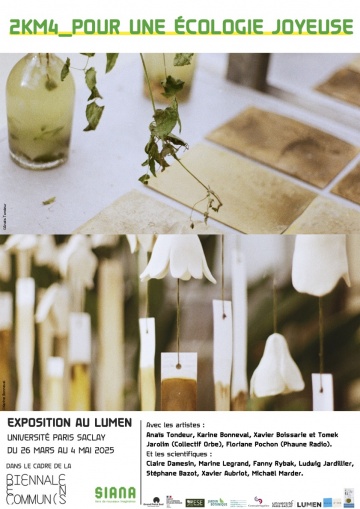Do trees dream of CO2?
From 20th to 24th of august 2022 Earthwise residency, Mols Bjerge, DenmarkKarine Bonneval, Christine Fentz, Per Hüttner
Earthwise research residency
The project creates a new platform for exchanges between humans and trees. We do so by developing technology that allows the trees' inner signals and the audience's neural activities to be translated into sounds. The life processes of the trees can be intercepted by the humans and vice versa, thereby creating potential for exchanges. Within the project we carry out nocturnal sessions with a chosen tree where the audiences can interact with trees in entirely new ways.
The audience can spend an evening in the forest in relaxed settings while enjoying a sound experiment, based on the inner lives of trees. Some neurological processes (e.g. brain activity) in the audiences’ bodies will also be translated into sound and light so that the trees can experience humans’ inner movements.
Do trees sleep?
During the day, the branches and leaves of the trees rise to catch the sunlight and activate the photosynthesis that is essential for their survival, but at night they fall back, as if to rest.
For its growth, a tree absorbs water through the roots, stores less than 5% in the new cells and transpires the rest through the leaves. During the day, under the influence of the climate), the absorption of water from the soil does not immediately compensate for the water lost through evaporation trough leaves and branches, and therefore the diameter of the branches decreases. It’s the tree transpiration.
At night, trees don’t transpire. The rehydration allows a recovery of the diameter of the branches and, if the climatic conditions have been favorable, a growth of them.
This day/night activity can be followed with an electronical device, the Pepipiaf. Developed by INRAe PIAF in Clermont Ferrand, this tool installed on the tree memorises in real time the variations in diameter of a tree branch very precisely, without disturbing the trees functioning, and at the same time measures the air temperature in the vicinity of the monitored branch.
Sounds
Plants have photoreceptors to detect light and distinguish different colours in the light spectrum. They also have a sense of touch and of the limits of their body: a tree will adapt its growth to the wind and its intensity. They are also sensitive to smells and sounds.
We humans have ears to perceive sounds. Trees don’t, but their cells can perceive vibrations, especially roots and leaves. Plants are anchored to the soil, half of their organism lives underneath and beyond our perception. But no ecological niche occupied by plants is silent. In addition to the sound of the five elements, almost all animals make a variety of sounds.
Phytoaccoustics is a new field of research researching how plants can perceive and emit sounds. For instence Monica Gagliano, from The University of Western Australia put speakers in soil playing different type of sound to plant roots. Those roots were attracted by the sound of water: they grew in the direction of the vibration source.
What are we, humans, doing while sleeping, while resting?
To measure the audience’s neurological activity we use Vision Forum’s own technology. We measure their brain activity and then translate the signals into sounds.
Could we share some of our signals during night time with trees?
Using sounds could be a good medium to share our oscillations as living beings. Could a tree be receptive to the oscillation of our brain waves transmitted in sound? Could its behavior be affected by it and could its own perception of it be turned into sounds?
This moment is an invitation to go and spend together some quiet time with a pine tree. Its signals are unique, as an individual being.
It’s an artistic experience based on scientific electronical devices done to measure the organic variations in our plant and human bodies.
It’s requires a specific state of mind, so the pathway to meet the tree is going to be a journey in our bodies to get closer to the plants state. Christine Fentz invites us for the first steps of the experience, so the guests can be ready in their body and mind to welcome this moment shared with other humans and a tree.














